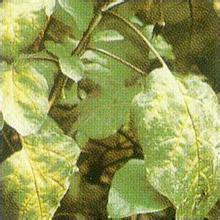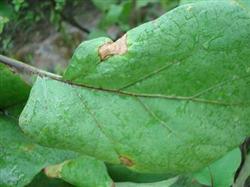Key points of eggplant Seedling stage Management

After 70% of the seeds in the seedbed emerge, remove the plastic film covered on the soil of the bed. Spray water frequently to keep the soil moist. During this period, we should pay attention to the control of underground pests, the method is to use 80% dichlorvos EC, diluted with 1 200 ~ 1500 times water and poured on the seedbed. When the seedling has 2 true leaves, the seedling should be divided, the seedling bed should be prepared, and the seedling should be transferred according to the row spacing of 8 cm × 8 cm. After moving, water should be thoroughly watered, and high temperature should be maintained to promote slow seedling. 28 ℃ ~ 30 ℃ in daytime and 20 ℃ at night, the seedlings can be slowed down in 2 to 3 days. When the seedling grows to 9: 10 true leaves, that is, 7 / 10 days before planting, the seedlings begin to cut and sun up. To exercise the seedlings at low temperature, the method is to pour water through the seedling bed, and then cut the soil with the seedling bed into tuo, gradually increasing the amount of air release. Get rid of the grass at night, and properly control the temperature and moisture before planting. Eggplant seedling standard is: seedling age 50-60 days, plant dwarf, upright erect, door eggplant bud, dark green leaves, complete root system. There is also a pest control before planting, spraying with 40% dimethoate EC 1200-1500 times or deltamethrin 5000 times.
- Prev

Eggplant deficiency and its remedial measures
In the process of eggplant growth and development, once lacking a certain element, the external morphology of the plant will generally show corresponding deficiency symptoms, which are often used as the basis for diagnosis of deficiency in production. Nitrogen deficiency eggplant nitrogen deficiency, leaf color becomes pale, old leaves yellow, severe dry off, bud stops developing and yellow, heart...
- Next

How is eggplant stem and leaf long spot to return a responsibility after all?
The small spots on eggplant leaves are light in the middle and dark brown on the edges, and the larger ones are irregular. There are also many small black spots on the disease spot. Many petioles have dark brown necrotic spots. After the stem disease, also has the dark brown disease spot, the disease spot is also the edge dark brown, the middle color is lighter, above also dense small black spot.
Related
- Where is it suitable to grow horseradish in China? it is expected to see the middle altitude horseradish in Alishan.
- How to prevent tomato virus disease reasonably? (Control methods included)
- Many people like to plant towel gourd on the balcony. What are the main points of this method and management?
- What crops can chili peppers be mixed with?
- Fertilization techniques and matters needing attention in Tomato
- What are the grafting techniques for peach seedlings in spring?
- Harm and control methods of root swelling disease of Chinese cabbage
- What are the pests of sweet potatoes? How to prevent and cure it?
- Symptoms, causes and Control methods of navel Rot in Tomato
- The cause of "Cucumber rotten bibcock" in Farmers' planting Cucumber and its Control Plan

